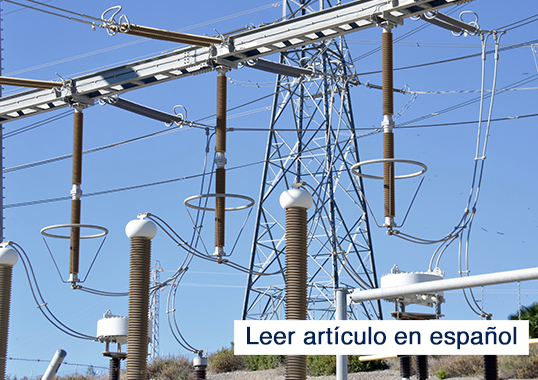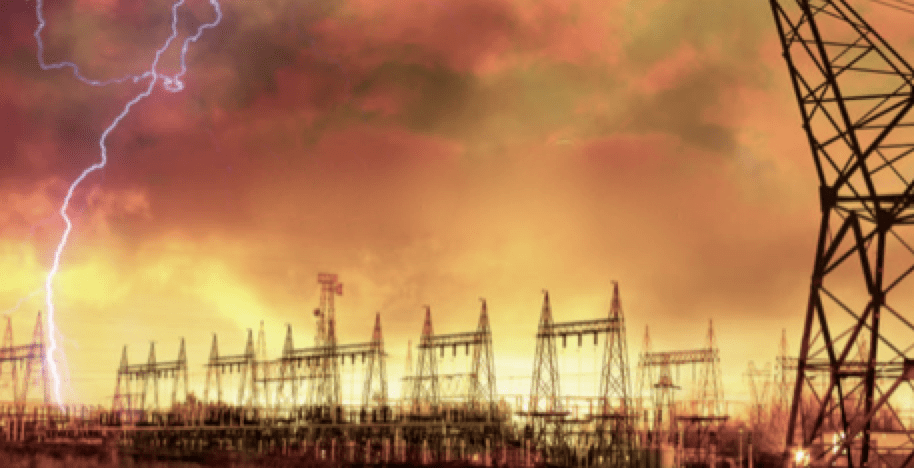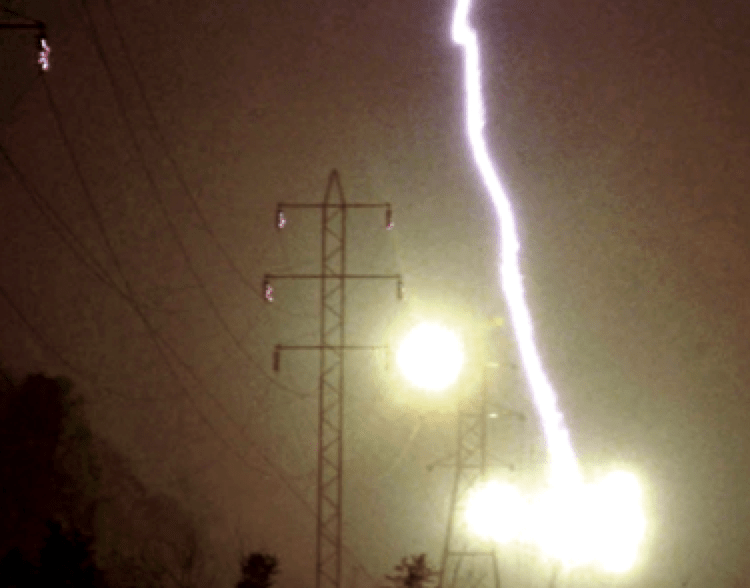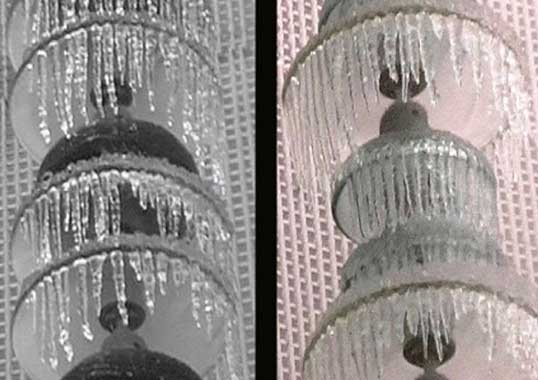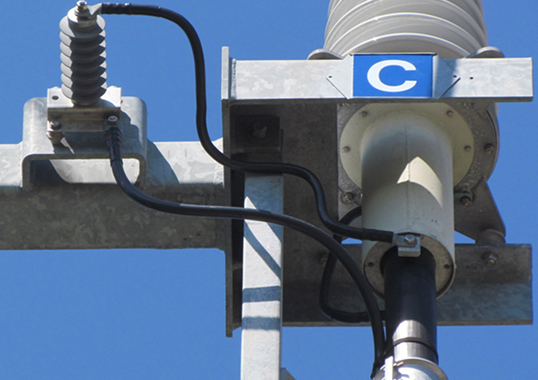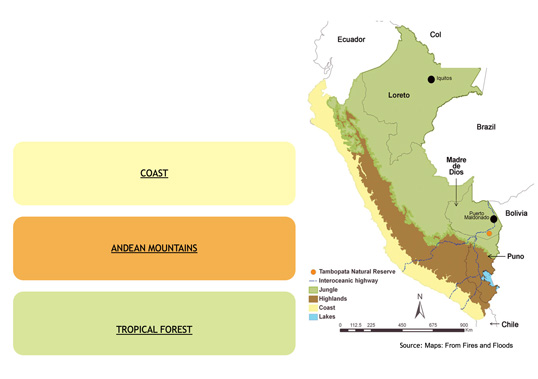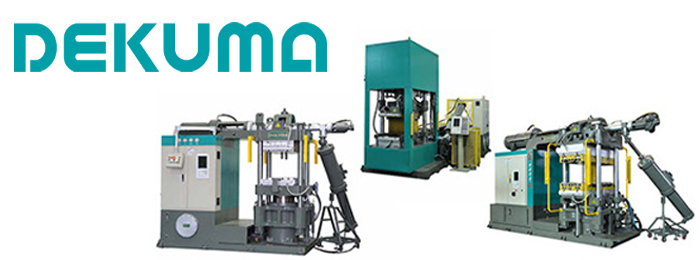Protecting substations from lightning and switching surges that lead to insulation flashover has been a key issue for as long as there have been power systems. While this need has remained constant over 100+ years, options on how best to mitigate high voltage stresses have changed quite substantially. This article, contributed by arrester expert Jonathan Woodworth, Co-Convenor of IEC TC37 MT4 – 60099-4 and Chair IEEE SPD WG 3.3.11 – C62.11, presents an overview of different scenarios, current available options and the rationale behind each specific case.
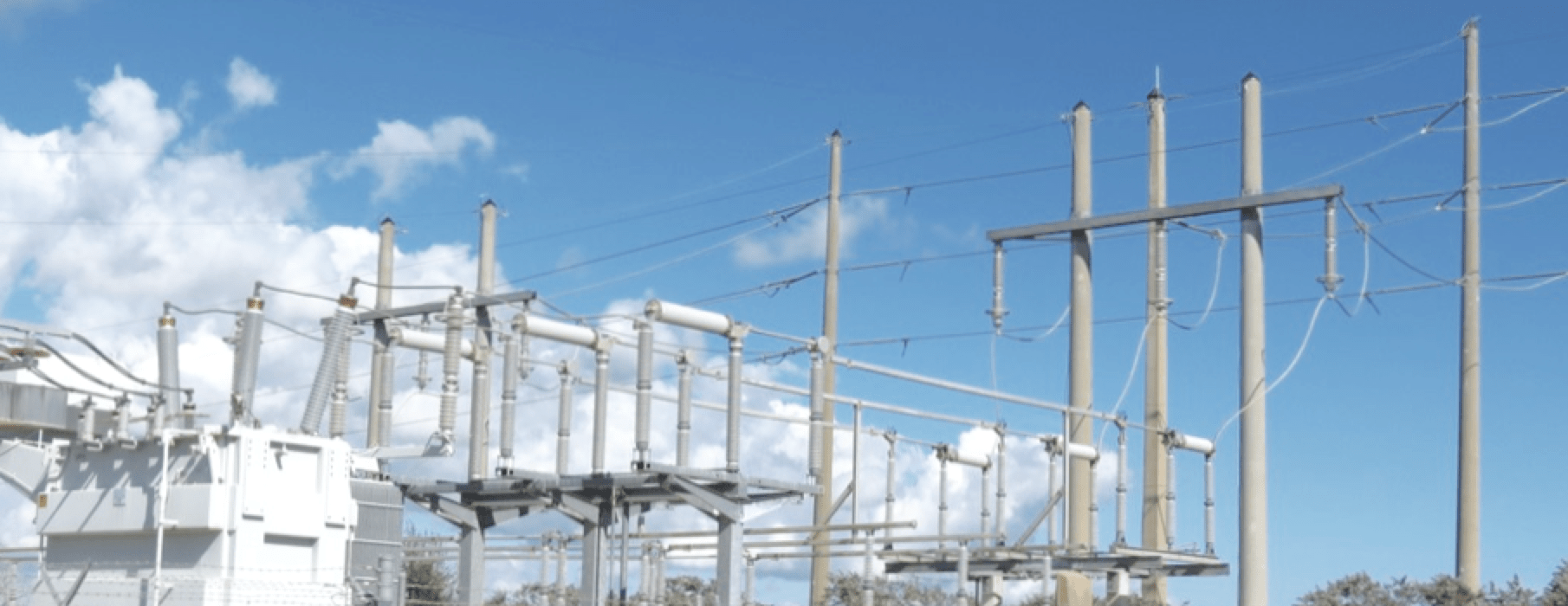
Considerations in Substation Protection
Considerations in the protection of substations are listed and covered below showing different performance criteria:
Failure Rate
This is the acceptable number of insulation failures over the service life of the station. A station is typically designed according to some quantifiable performance levels, as outlined in Section 3.4 of IEC 60071-2 and in IEEE 1313.2. Moreover, IEC 62305-2–2010 identifies tolerable risks for a substation, where risk level is affected by different types of service loss.
Required Insulation Withstand Level (Urw)
This is given in terms of surge types such as fast, very fast, slow and temporary overvoltages.
Safety Margins
The safety margins typically used in substations are 15% for transformer windings and 5% for air insulation.
Separation Distance
This is the distance between arrester and intended protected equipment. If too great, voltage at the protected equipment could exceed its required insulation level due to reflections and traveling waves.
Open Breaker Protection
Breakers in the open position leave the line side bushing of the breaker 100% unprotected if arresters are not installed at the line terminal. While this is a low probability issue, for critical stations protection of an open breaker can be important
Altitude
Surge performance of insulation at a substation is highly dependent on elevation since insulation withstand voltage reduces by ~11% with every 1000 m increase in altitude. Because of this, longer insulators are required at higher elevation and arrester protection becomes ever more important. The arresters themselves are sometimes also required to be longer due to power frequency requirements.
Insulation Type
Some insulation can withstand flashover without damage and some cannot. Insulators in air are a self-restoring type insulation that depends on surrounding air for its insulation capability outside the insulator body. But should voltage stress in the air exceed its withstand capability, the insulator experiences flashover failure. Nevertheless, once the flashover is cleared, the insulator holds off line voltage as it did before the surge. Post insulators, tension insulators, bushings, switch stand off bushings and cable terminations are all examples of different types of self-restoring insulation. By contrast, transformer windings and all oil/paper type insulation cannot recover from a disruptive discharge and are therefore considered non-self-restoring insulation. Once failure has occurred in such non-self-restoring insulation, the transformer will need to be refurbished or replaced. Other types of non-self-restoring insulation include underground cable, CCVT internal components, PTs and CTs.
In the process of protecting substations, the type of insulation dictates level and cost of mitigation applied to provide proper protection such that non-self-restoring insulation is generally protected at greater effort and cost.
Assets Requiring Surge Protection
A power transformer’s primary winding is universally protected at the transformer using arresters. This is because the transformer is typically the highest value asset in a substation and often has the lowest surge withstand voltage. It can be stated with confidence that 99% of all power transformer primary windings in outdoor air insulated substations are protected by arresters. The secondary windings are the second most universally protected insulation in a substation equipped with a power transformer. These windings are not quite so exposed to surges and thus are protected with arresters perhaps only about 75% of the time.
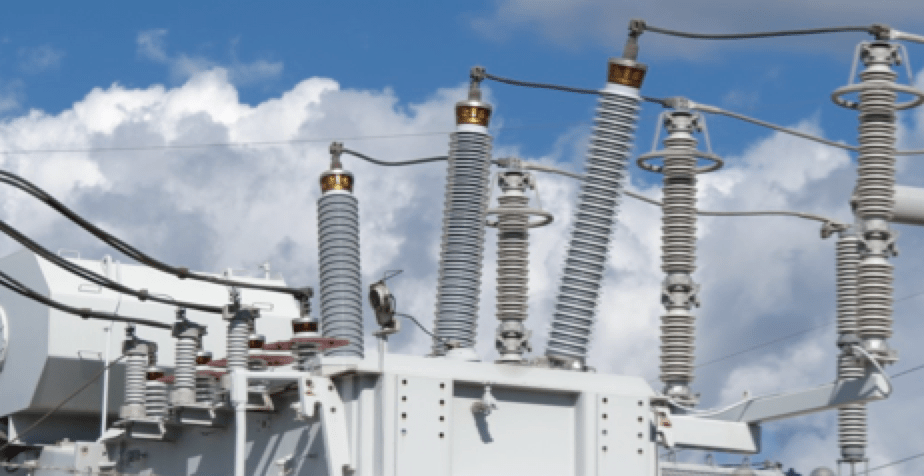
Transformer Bushings
Both primary and secondary transformer bushings are protected by default using the same arresters that protect transformer windings. If the transformer neutral exits the transformer through a bushing and is connected to a neutral grounding resistor, grounding resistor and bushing should both be considered for protection by an arrester.
Cable Terminations
Cable terminations within a substation are often paired with arresters. But the protection in this case is more for the cable since the termination itself is self-recovering type insulation while the cable is not. Should cable insulation become damaged from a surge, repair of that asset will become a costly task.
Breaker Bushings & Longitudinal Insulation
Breaker bushings and internal longitudinal insulation between contacts are also high value assets within a substation. Yet these are typically not as well protected as are power transformers, but should be. More on this below.
Metering Equipment
Voltage monitoring CCVTs and PTs are high in value and, if present in a substation, their protection priority should be considered high. When designing substations, these devices are sometimes located where they actually become part of the protection scheme due to their capacitance.
Shunt Capacitor Banks
These can absorb significant charge from a lightning or switching surge without damage. Therefore, if a bank contains many MVar, it is not likely in need of surge protection. Smaller banks, however, may not be able to take a large surge without over charging and flashing over, so they often need protection. Whether the bank is large or small, need for arrester protection of the system from the bank should also be evaluated.
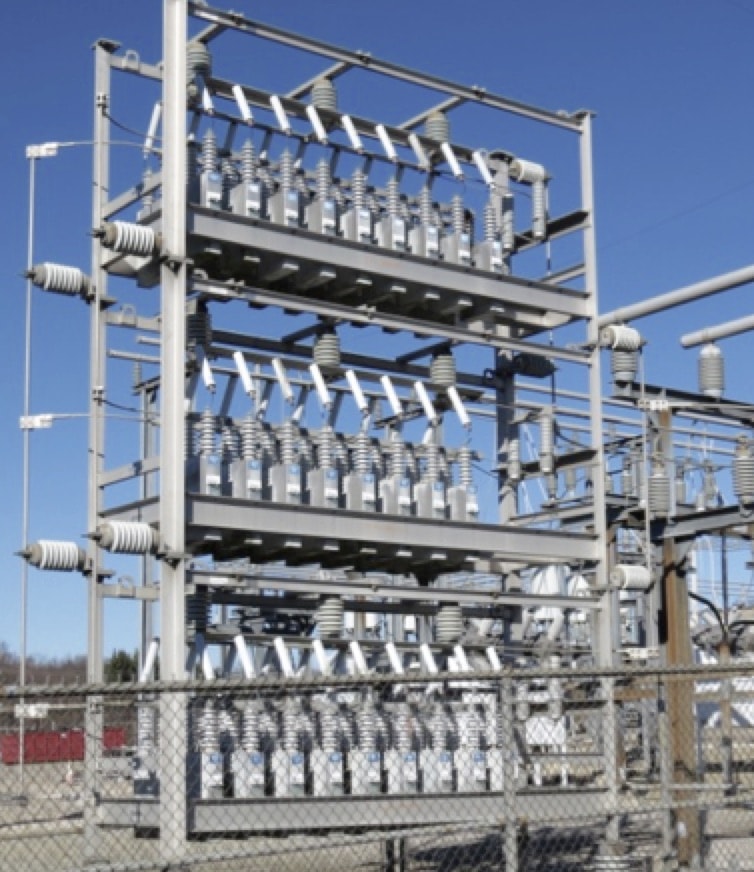
Surge Sources & Mitigation Methods
Direct Lightning Strike to Substation
Direct strikes to substations do occur although it is rare that a flash makes a direct hit on equipment. This is because stations are universally protected from these by overhead shield wires or masts. For example, shield wires are situated above the equipment and around the perimeter such that they intercept any strike and transfer it to earth. Still, even though a direct strike is averted, the possibility exists that an induced surge will make its way to equipment. Where insulation withstand voltage is greater than 350 kV, it is not likely that flashover will occur from an induced surge. But if insulation withstand voltage is less than 350 kV arresters are needed to protect equipment from induced surges.
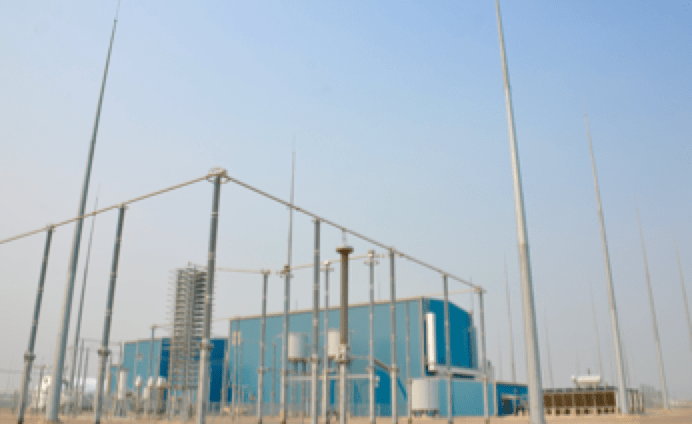
If masts are used, these are situated strategically so that all direct strikes will hit them instead of the equipment or bus. The most suitable standard for designing and quantifying effect of substation shielding is IEEE 998.
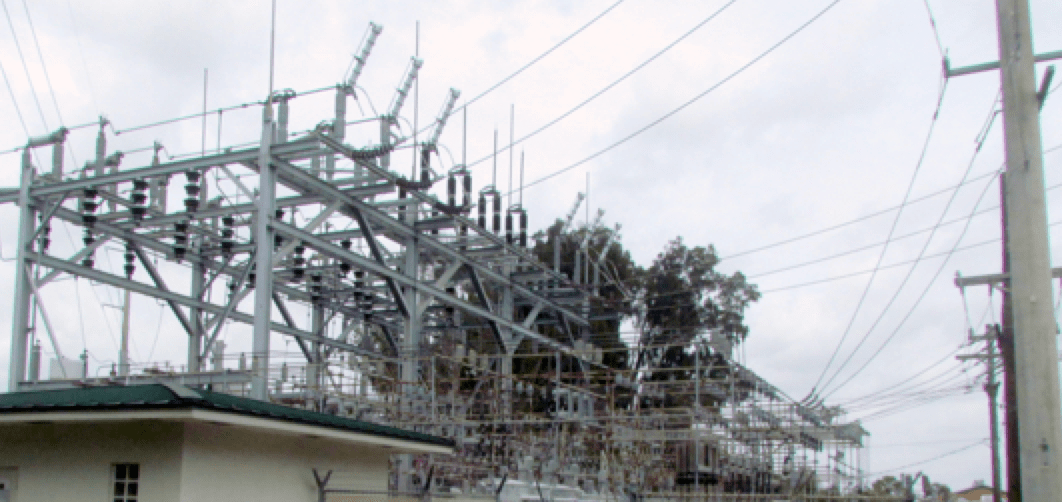
Lightning Surges on Incoming Lines
The only way for a potentially damaging lightning surge to challenge a substation is by entering on an incoming line. If the incoming line is shielded, there needs to be a backflash not too many spans from the substation to a phase conductor for the surge to pose a problem. When a backflash occurs at a tower, it produces a very fast rising surge. But as the surge travels down the line, the corona on the line reduces the traveling wave-front steepness such that by the time it reaches the station it has become manageable.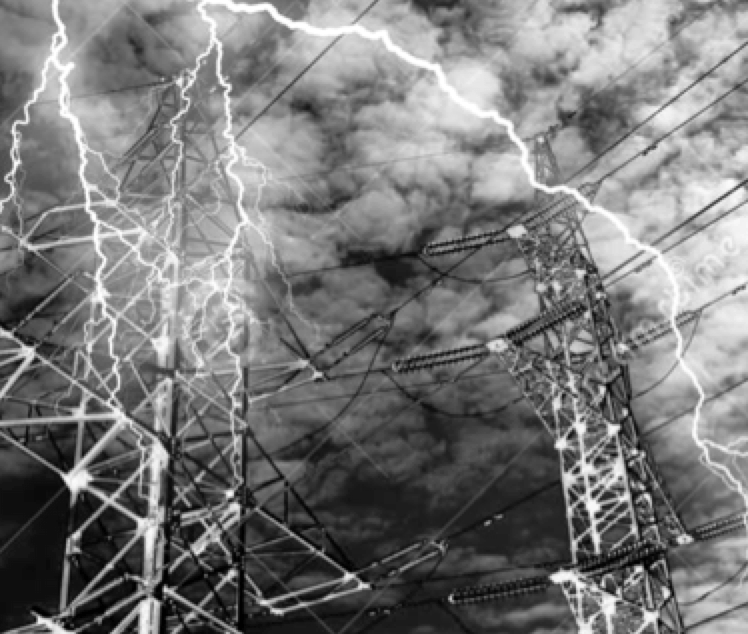
But if the backflash occurs only a span or two away, the wave-front steepness of the entering surge is extremely high and will significantly stress insulators in the substation – even when arresters are installed. Fortunately, substation arresters seldom see more than 10-15 kA of current from a backflash on an incoming line. As a result they are not thermally stressed by lightning, only electrically stressed.
Switching Surges on Incoming Lines
Switching surges on incoming lines are the most common type of surge to reach within a substation and can travel hundreds of kilometers due to their low frequency relative to lightning. When these types of surges enter, the whole primary side of the substation sees the same rise in voltage and arresters at the transformer can protect the whole station. Switching surge energy dissipated by the arrester on systems with voltage greater than 240 kV can at times be significant and challenge the arresters’ energy handling capability.
Switching Surges Created Within Substations
Switching surges are also generated within the station from the operation of breakers or other switching devices. For both external and internal switching surges, the point on the AC wave where the device operates has a profound effect on surge amplitude. For example, when switched at peak voltage, a surge of 2 to 3 times initial voltage can be generated. In some cases, a breaker may pre-strike or restrike during operation. For internally generated surges, the surge wave-front can be very fast rising and will pose a serious threat to nearby insulation. For this type of switching surge, special mitigation with surge capacitors and arresters may be necessary. If a capacitor bank is switched within a substation, a significant surge can be generated that will need arrester mitigation.
Types of Substations & Special Protection Considerations
Transmission Substations
There are several different types of transmission substations, e.g. those with and without transformers, combination transmission and distribution stations, those that have large voltage control equipment such as series capacitor banks, etc. In all cases, arresters are applied to mitigate lightning and switching surges that may occur. In stations equipped only with breakers but no transformers, arresters may or may not be installed. For example, they may not be necessary if there are no possible significant end points or open points. Moreover, if line impedance remains unchanged, arresters are not required.
In transmission stations where there is either a step-up or step-down transformer, arresters should be used on both high side and low side of the transformer if surges can enter from either direction. If breakers are present, line entrance arresters should be considered for protection if the breaker is open at any time. At critical substations with breakers, if these are used to clear faults, it is possible that during such a fault-clearing event a second surge can impinge on the line side bushing while the breaker is in the open state. Now, the arrester at the transformer cannot protect the bushing and voltage doubling can occur with subsequent bushing flashover. To protect the breaker’s line side bushing, an arrester should be installed at the line entrance.
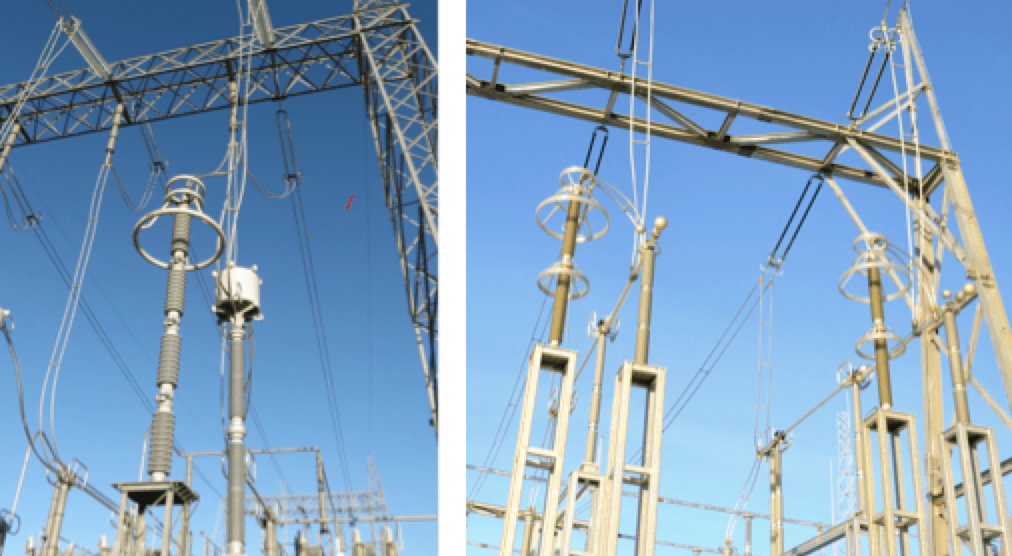
Distribution Substations
A distribution substation is one that steps a transmission voltage down to 34.5 kV or less and has outgoing feeders to urban, industrial, or commercial areas. Such substations can become quite complicated, with many types of equipment that need protection. The line side of the power transformer, for example, should always be protected. However if the low side cannot see a surge, arresters on that side are not necessary. The exception to this rule occurs when a breaker is located on the low side. In this case, it is recommended that arresters be installed between the sensitive windings and the potentially hazardous fast surge that a breaker can create.
At distribution feeder exits where lightning surges can enter the station, arresters should always be applied to mitigate these surges that will invariably arrive sooner or later. If these arresters are close enough to the LV side of the power transformer, they can also be used as protection for the transformer.
Another condition that often arises in distribution stations is the use of neutral grounding resistors (NGR) to limit the fault current into the system. When NGRs are used, arrester Uc and MCOV ratings need to be increased to account for the potentially long and high amplitude overvoltages that occur.
Indoor Air-Insulated Substations
Enclosed substations can vary from just a few components to an entire building full of electrical equipment. Industrial complexes, for example, often house numerous internal stations and should be treated the same as any outdoor air-insulated substation. A problem that can arise with this type of station is visibility of the arresters that are often buried within a cabinet, making easy access to them difficult. This only becomes a concern should there become a need to verify the arrester’s health using an infrared camera or by other means. It is therefore suggested that arrester enclosures have at least one side that is not fully enclosed and allows arresters to be evaluated if the need arises. Another issue that arises in this type of station more often than in other types, is long cable runs with open points. Voltage doubling issues arise in this configuration and arresters at the open points should be considered.


Full & Partial GIS Substations
A totally GIS station with GIS arresters is quite different from other substations and surge protection here is often specifically engineered. Arrester rating is often quite high in voltage to handle significant energy during any surge. If a station is partially air-insulated and exposed to lightning, surge protection is clearly necessary. But if the station is partially air-insulated yet inside a building, surge protection becomes of lesser concern. When all inputs and outputs are underground, surge protection design studies should be carried out to determine if and where to install arresters.
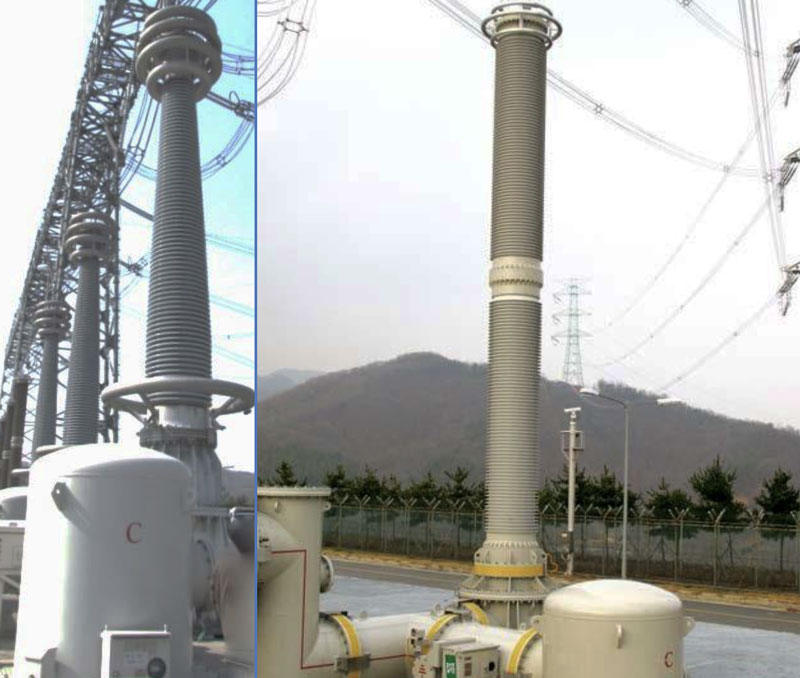
Generator Stations
Generator stations are the most difficult to protect because generator withstand voltage for very fast front surges is actually lower than the BIL. If a station is a small unit where incoming lines are only a few hundred meters from the generator, special protection is necessary. Not only can surges get through the step-up transformer, they can be generated at low voltages (e.g. 15 kV) by the breakers in the system. Very fast rising surges and high energy surges can be found on the generator bus. This is the place where surge capacitors are as important as surge arresters.

Types of Arresters Used in Substations
Station Class
The latest issue of IEC 60099-4 now refers to previous Class 2,3 and 4 arresters as ‘station class’ arresters, classified according to their test parameters. These usually have lower residual voltage as well as highest fault current withstand and energy handling ratings. While such arresters are used at nearly every substation, they may not always be the only type used. The primary reason to use station class arresters at substations lies in their fault current withstand capability. Since fault current in a substation often comes from several directions, available fault current can easily reach above the 20 kA limit of distribution arresters. The default arrester is therefore station class.
Distribution Class
The distribution class arrester, formerly referred to as Class 1 arrester, can be used in substations where fault current is below 20 kA. Here, the residual voltage of the distribution class arrester can often satisfy the station’s performance requirements. Moreover, for stations below 260 kV, the energy handling capability of a distribution arrester is typically also adequate. Before assuming that a station class arrester must always be specified, it is best to consider whether a more versatile, lower cost distribution arrester is actually sufficient.

Arrester Selection Considerations
MCOV Uc
There are no special considerations needed when selecting the Uc of an arrester in a substation. If the arrester is intended for protection of transformer windings, this should be as low as possible to offer the best protection.
Energy Rating
If an arrester is applied to lines with system voltages at 345 kV or above, energy ratings should be evaluated. If system voltage is below 345 kV, energy rating is not an issue, except when there is a large capacitor bank on the system.
Fault Current Withstand Rating
This arrester rating is especially important in substation protection since, as stated earlier, high fault current may be available. If so, arrester selection must take this into account.

